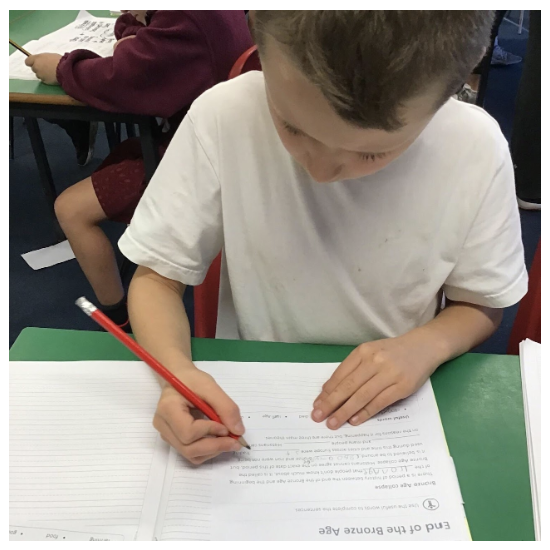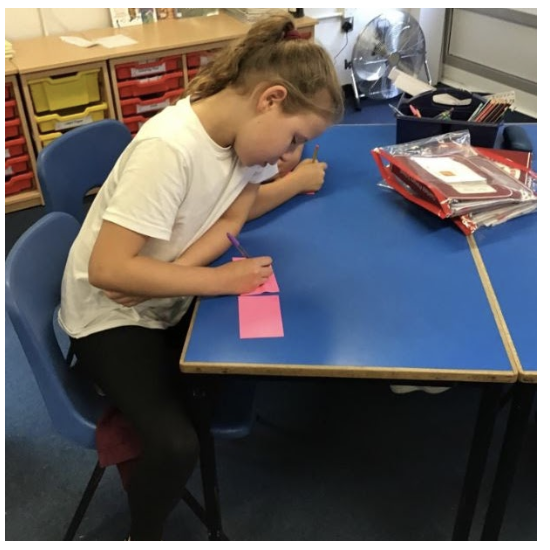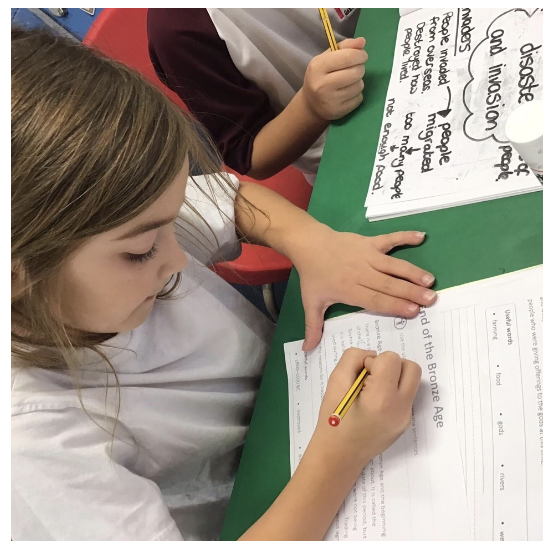Writing
Writing at Oakfield
At Oakfield we introduced the Talk for Writing (T4W) approach in November 2022. This approach enables children to imitate the key language they need for a particular topic orally before they try reading and analysing it. We teach all of our English through fun activities that help them rehearse the tune of the language they need, followed by shared writing to show them how to craft their writing. This enables them to choose the writer tools they want to use in their independent writing, which in turn helps them to develop their own literacy voice.
The Method
Talk for Writing is powerful because it enables children to imitate the language they need for a particular topic orally before they begin reading and analysing it and then writing their own version. Pie Corbett gives a brief explanation below of the basic principles. It builds on three key stages:
Stage 1 – Imitation
Stage 2 – Innovation
Stage 3 - Independent Application
The Imitation Stage
Once the teacher has established a creative context and an engaging start (the hook), a typical T4W unit would begin with some engaging activities warming up the tune of the text to help children internalise the pattern of the language required.
This is followed by talking an exemplar text, supported visually by a text map and physical movements to help the children recall the story or non-fiction piece. In this way the children hear the text, say it for themselves and enjoy it before seeing it written down.
Once they have internalised the language of the text, they are in a position to read the text and start to think about the ingredients that help make it work.
The Innovation Stage
Once the children have internalised the text, they are then ready to start innovating on the pattern of the text. This could begin with more advanced activities to warm up the key words and phrases of the type of text focused on so the children can magpie ideas. Younger children and less confident writers create their own text maps and orally rehearse what they want to say. The key activity in this stage is shared writing, helping the children to write their own by ‘doing one together’ first. This could begin with using a boxed up grid to show how to plan the text and turn the plan into writing. This allows the children to see how they can innovate on the exemplar text and select words and phrases that really work. Demonstrating how to regularly read their work aloud to see if it works is important here. This process enables the children to write their own versions through developing their inner judge when they start to decide why one word or phrase is best.
Independent Application
During this phase the children plan and write their own story based on the text type they have been learning. They experiment with the ideas and begin to explore their own style of writing using sentence types from the model text before finally writing their version of the text.
Everyday symbols

These are added across the year groups and are the basics expected from children when they are writing in any genre.




Click here for more information on Handwriting.
Tips for getting your children to write
-
Build a climate of words at home. Visit places and see things with your child, then talk about your experiences.
-
Let older children see you write often. Make sure children see you write notes and letters and perhaps stories to share. Perhaps read aloud what you have written and ask your child their opinion of what you’ve said. Making changes in what you write confirms for your child that revision is a natural part of writing.
-
Be as helpful as you can in helping your child to write. Talk through their ideas with them; help them to discover what they want to say. Give them help when they ask for help with spelling and punctuation.
-
Provide a suitable space for your child to write. Perhaps provide different kinds of pens and pencils, pads of paper and stationery, a book for a diary or journal, a dictionary and thesaurus appropriate to their age.
-
Encourage frequent writing and be patient with reluctance to write. Frequency of writing is important to develop the habit of writing.
-
Praise your child’s efforts at writing, resisting the temptation to focus on errors of spelling and punctuation. Emphasise your child’s successes.
-
Share letters from friends and relatives and urge them to write notes and letters to your child, no matter how brief. Writing is especially rewarding when the child gets a response. Write thank you notes alongside your child.
-
Be alert to occasions when your child can be involved in writing, for example, helping with shopping lists, taking down telephone messages, writing notes to friends, helping plan trips and writing invitations for family get-togethers.


